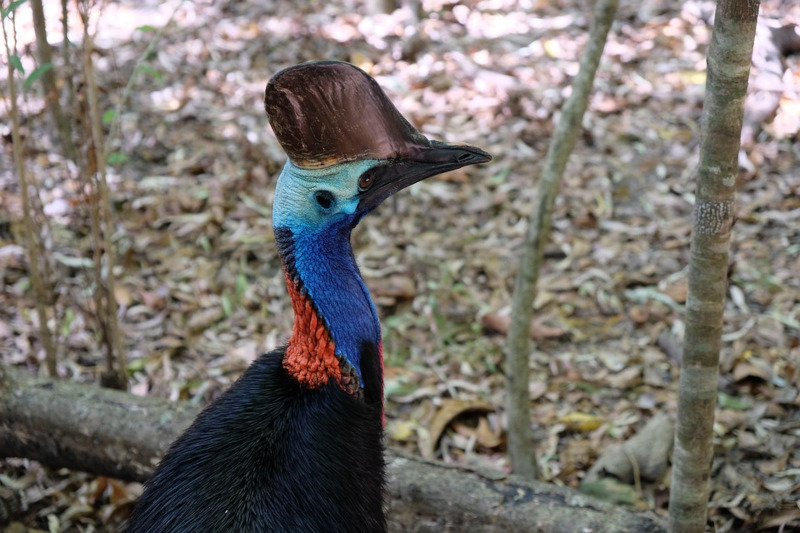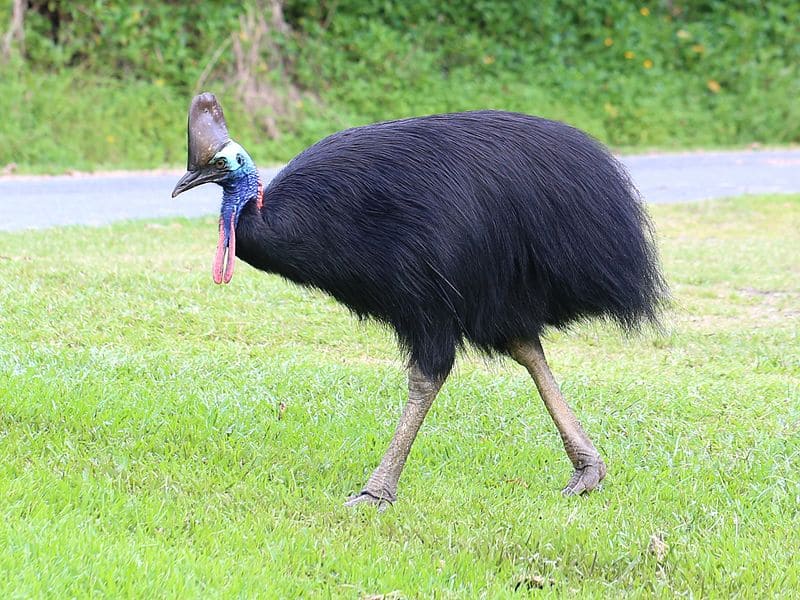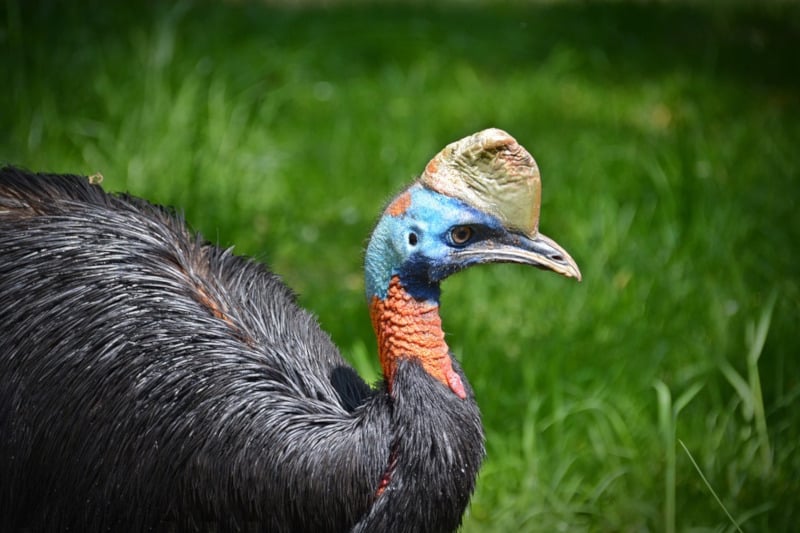Cassowary Facts
- Perhaps most notably, the term Cassowary actually applies to an entire genus of large flightless birds. Currently, three species still exist, however. The species named the Southern Cassowary, though, remains by far the most common of the three varieties.
- These magnificent creatures stand out for several reasons. For one, among known similar birds, this fascinating animal ranks as the second heaviest, and also third tallest of them all. Those distinctions alone serve to distinguish them from their peers.
- Yet their distinctiveness doesn’t simply end there. That’s due to the fact that the truly unique birds generally remain quite reclusive. The fascinating avians also continue to prove themselves to be highly elusive, making detailed studies complicated.
- But, the impressive species further remains quite shy, in terms of behavior, even more so than most wild animals. Due to this trait, the large bird also continues to be well known for its ability to rapidly disappear into the dense rainforest when approached.
- The surprising animal generally has a remarkably shy demeanor, as well, when encounters do occur. If provoked, however, the creature does has the ability to inflict serious, possibly even fatal, injuries to humans. That’s because of their powerful legs.
- For the moment, the IUCN has no listing for any of the species of Cassowary on its Red List. They do face various threats, however. Habitat loss represents a growing problem, as with many creatures. And of course, climate change poses a potential threat.
Related Articles



Cassowary Physical Description
No matter which of the forms of Cassowary one encounters, the experience typically makes a strong impression on the viewer. That usually occurs, however, due to a combination of several factors. That’s true since it’s both a distinctive and quite large bird.
Like many creatures around the world, the amazing species displays a comparatively moderate degree of sexual dimorphism. Due to this physiological trait, among all three species of this marvel of Nature, this trait appears in terms of both appearance and size.
Males of all members of the group generally develop as larger and heavier than females. This size difference often manifests as quite significant, with males often reaching weights of up to 154 lb (70 kg), while females typically weigh less. They’re also moderately taller.
The feathers of the female Cassowary also generally appear more colorful than those of the male. Their wings remain vestigial and also extremely small. The legs develop as powerful, however. Individuals have the ability to run at speeds of as much as 31 mph (50 km/h).
The fabulous animal also has a long, sharp claw on the middle of each of the three toes. This claw sometimes grows to a length of as much as 5 in (12.6 cm). This serves as a very powerful means of self defense, since the bird can strike with great force and accuracy.
- Kingdom: Animalia
- Phylum: Chordata
- Class: Aves
- Order: Casuariiformes
- Family: Casuariidae
- Genus: Casuariius
Cassowary Distribution, Habitat, and Ecology
Unfortunately for those who appreciate these creatures, the amazing Cassowary evolved as endemic to a range that’s both highly limited and specific. That’s due to the fact that this marvel of Nature and evolution evolved as native to the extremely wet and humid rainforest.
Sadly, it also only occurs naturally in a few very specific areas. These regions include the island nation of New Guinea, northeastern Australia, and local islands. For the moment, experts have been unable to find any evidence of it ever existing outside that range.
The remarkable creature displays decidedly strong preferences regarding its choices of habitat. It’s thus mainly found in the tropical rainforests and adjacent woodlands within its native range. It also has a tendency to wander into grasslands, savanna, and swampy regions.
This wonder additionally demonstrates strong flexibility regarding altitudes for its habitat. That’s because populations appear at a wide range of elevations within its habitat range. These frequently extend from sea level up to around 4,900 ft (1,500 m) above sea level.
Except for mating season, the beautiful Cassowary usually lives as solitary creatures. Females further appear to be highly territorial, while the males seem to be much less so. The females also typically claim larger territories for themselves than do most of the males.
It feeds as an omnivore, feeding on a diverse diet that includes fruits, berries, seeds, insects, small vertebrates, and even carrion. It also constitutes an apex predator in its local ecosystem, with very few natural predators capable of preying on adult birds.
The amazing bird also possesses the ability to deliver a serious, even fatal blow with its dangerous claw. Though attacks on humans rarely occur, there have been serious injuries, even fatalities reported. Nature designed it with a means of defending itself quite well.
Overall, this marvel is an integral component of the rainforest ecosystem, contributing to seed dispersal, vegetation structure, and biodiversity. Protecting its populations and habitat continues to be essential for maintaining the health and functioning of these ecosystems.
Species Sharing Its Range



Check out our other articles on 5 Rare Mind-Blowing Cloud Types, Rainbow Grasshopper, Ometepe Island, Ascension Island Parsley Fern, Wheel Bug, Loggerhead Sea Turtle












good info thanks
Hello Tina,
We thank you for those kind words of appreciation. Such comments are always welcome and appreciated.
OBP